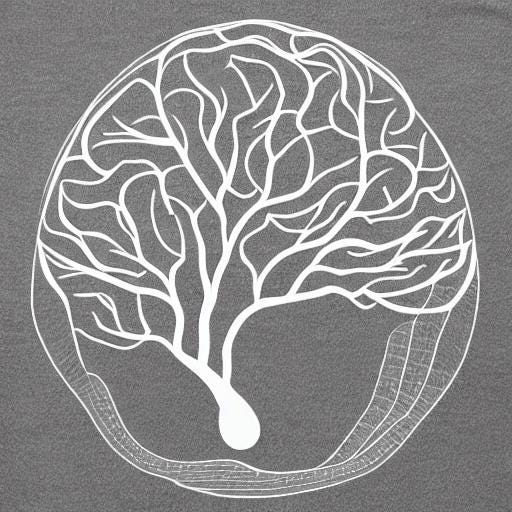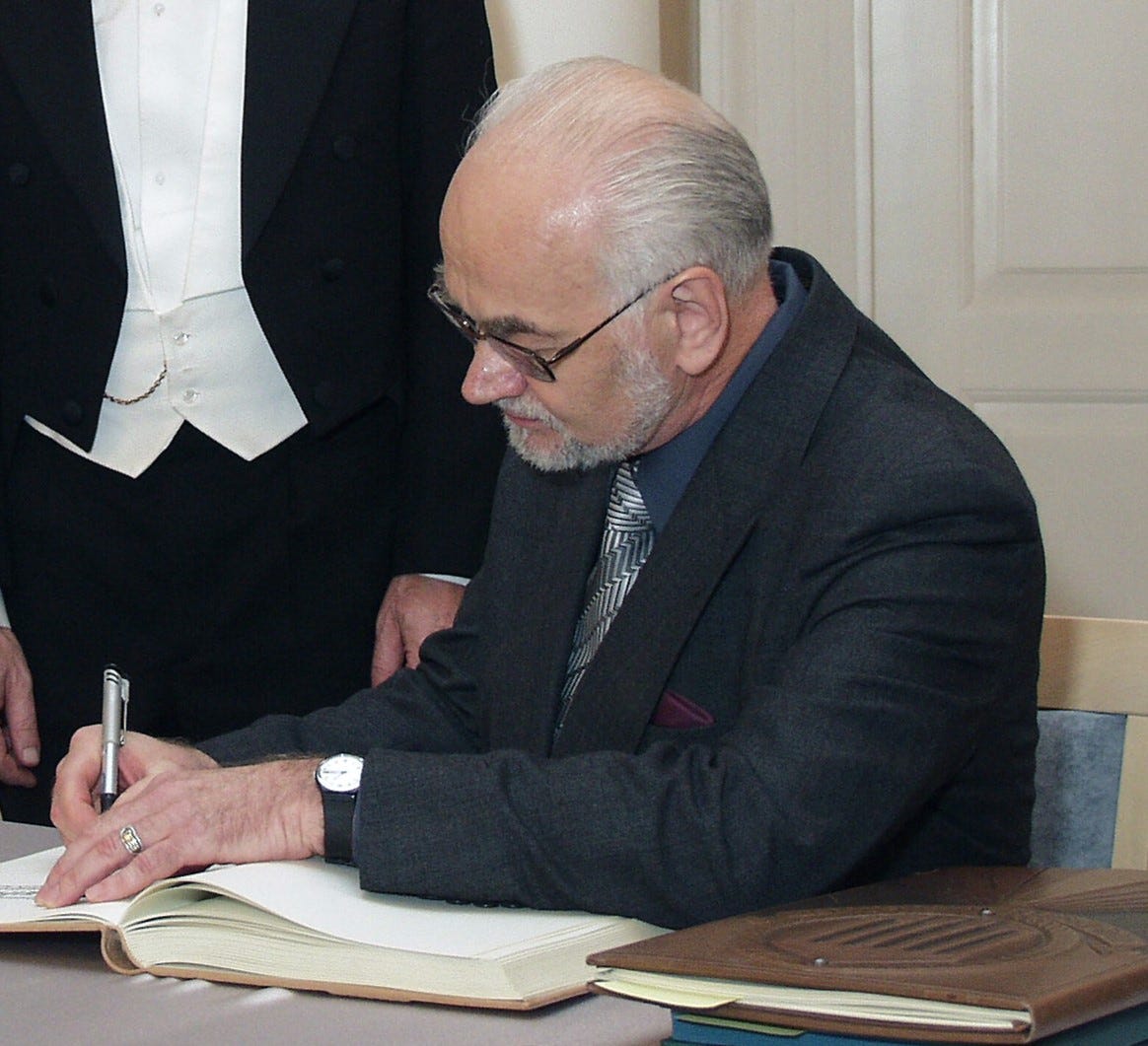Jaak Panksepp's SELF & Affective Consciousness
Perspectives from Affective Neuroscience on the Nature of the Self
There could be no more salient question to the field of psychotherapy as to the nature and origin of the self in consciousness. Nothing can be more liberating than the experience of deconstructing the illusion of the self as is trained in Buddhist meditative traditions. Releasing neurotic hold on egoic concepts in the mind frees the newfound reflector-upon-the-self to engage in new ways with thought - including thoughts of fear, shame, anger, and guilt (among others) that may be causing conflict for the thinker. The therapeutic usefulness of this kind of self-awareness cannot be understated.
Much can be said about cross-cultural perspectives on the nature of the self. In recent decades, neuroscientific findings have identified that self-referential thought (self) and non-self-referential thought (everything else) correlate with predictably located, counter-inhibitory networks of the brain, findings that I believe settle tired debates about whether or not the self is an illusion.
It is not uncommon for philosophers and neuroscientists to proffer pet theories about the nature of the self, some more influential than others. One of the more influential has been that of the late neuroscientist Jaak Paaksepp who pioneered the field of social affective neuroscience. Panksepp’s primatization of emotion leads to an original perspective on the origin of what we call the “self” in consciousness, explaining it as a process rather than an object (or non-object) of consciousness. If you can get past Panksepp’s acronym for S.E.L.F. (Simple Ego-type Life Form - Panksepp likes to use acronyms to identify affective circuits in the brain, this one feels like it undermines the profundity of his philosophy), you may find Panksepp’s brain-based conceptualization of the self to yield fresh insights.
Cognitive & Affective Consciousness
In the era of excitement, fear, and controversy over new applications of Artificial Intelligence, it is easy to forget that our consciousness is not just the linguistic and higher cognitive processes that appear to put humans on the same level as talking smart devices. Although approaches from cognitive science, linguistics, and analytical philosophy have formed many explanations of consciousness (and along with it the appearance of the self in consciousness), we are more than our thoughts.
Naturally, affective neuroscientists (and perhaps budding psychotherapy interns, cough) are biased toward emotions over cognitive and linguistic processes. Panksep seats the origins of consciousness, not in the cognitive processes of the evolutionarily new prefrontal cortex, but in the ancient regions of the brain including the brain stem and the limbic system. This is why we intuit a sense of psychological connection with other mammals (whose brain stem and limbic systems are similar to our own) and also why we experience indications of consciousness in humans who, because of brain developmental disorders, have underdeveloped or non-existent prefrontal cortexis.
Understandably then, Panksepp’s theory of the self is informed by his belief that subcortical (not cortical) brain areas constitute the “well-spring of consciousness”12. In Paakseppian philosophy, higher-order elements of consciousness (linguistic and cognitive) occur as neurochemical and neuroelectrical processes seated in lower brain areas interact with neurological circuits and processes in the prefrontal cortex.
The Self as a Representational Process
Paaksepp acknowledges, as do most philosophers (and lay people who are accustomed to doing much thinking about thinking), that there is no “ultimate observer” of the goings on in consciousness3 (after all, who then is the observer observing the observations of the observed observer, ad infinitum). The self, to Panksepp, is a self-representational process with ancient and deep-seated neurological correlates. The neural foundations of this process were present in the ancient reptilian and mammalian brains, and then continued to evolve upward (through the higher regions of the brain) and with increasing complexity throughout mammalio-human history. At first, this network was likely a stabilizing mechanism for motor activity (an equilibrium maintainer with presumably no self-referential capability) and gradually evolved to our experience of the self in consciousness.
The neural framework for the foundational process of the self exists in humans and animals alike. In humans, these foundations mature into the neural processes associated with what we often refer to as “the self”. Panksepp puts it this way:
“The SELF first arises during early development from a coherently organized motor process in the midbrain, even though it surely comes to be represented in widely distributed ways through higher regions of the brain as a function of neural and psychological maturation”4
So while Pankseep acknowledges that there is no homunculus or ultimate observer of everything that is going on in the mind, there could be a “motor-action homunculus” from which more complex states of bodily awareness and self-referential perception arise. The process of observing emotions and perceptions in the mind (a concept called Cartesian Theater) is the work of later evolutionary extrapolations of this same neural network. The more evolutionarily advanced forms of this neural substrate, as would be present in the human brain, create a complex network interconnecting with disparate areas of the brain associated with sensory perceptions and our experience of emotions.
Panksepp sums it up this way:
“All higher monitors are entranced by a central process that itself does not observe but exists in the very center of the Cartesian theater as the primordial neurosymbolic representation of the core of each individual experience”5
What makes Panksepp’s perspective so intriguingly different, is that he seats the neural correlates of both consciousness and the self, not in the higher cognitive regions of the brain like the cortex, but in our primal roots at the center of the brain. Panksepp specifically calls out the cellular and neuronally dense periaqueductal gray (PAG) as the well-spring of consciousness.
The Self and the Maintenance of Homeostasis in the Brain
Conceptualizing the self as a self-referential process that evolved out of an early mechanism for motor equilibrium has interesting implications for psychotherapy. Following from Panksepp’s ideas, the self is, by definition, interested in homeostasis. Thus, the brain attempts to moderate itself by identifying deviations from a resting state, in the form of activations of affective networks and responds with a regulatory mechanism - the self. Affective consciousness, arising from neural networks that produce emotion deep within the brain stem, interconnects with higher regions of the brain like the frontal and temporal areas of the cortex6 resulting in the observer cognitions that we associate with the self. Language, as elicited by left hemisphere cortical regions, then could be considered a function of this stabilizing mechanism that integrates the affective consciousness of the lower brain regions. Following, when we talk about our “self”, referring to thoughts or feelings, it is the brain’s linguistic areas responding to this self-referential process.
How does this connect to clinical approaches to the mind?
I idea that the brain is a self-equilibrating organ that can use cognitive and affective processes to achieve neurochemical and neuroelectrical balance is shared by some clinicians. Notably, Louis Cozolino frames psychotherapy as a social interaction that seeks to assist with the integration of neural circuits toward such a psychological and organismic homeostasis. In his landmark work The Neuroscience of Psychotherapy - Healing the Social Brain7, Cozolino offers insights into how therapeutic modalities may facilitate the integration of left and right hemisphere brain activity and the neuronal density of connections across the three evolutionary strata of the brain, namely the brain stem, limbic system, and cortical system.
Such an understanding impacts a clinician's work. No longer do they use specific behavioral outcomes, remission of a mental health diagnosis, or any particular set of approved affective states to frame their intentions during therapeutic practice. The goal of actively interfacing with the client as a social appendage to the client’s brain’s use of its self-referencing equilibrium system (Panksepp’s S.E.L.F.) will contribute to emotional balance and cognitive health and will likely lead to the aforementioned traditionally-used treatment goals.
Panksepp, J. (1998) Affective Neuroscience - The Foundations of Human and Animal Emotions.
The reference to the Periaqueductal Gray (PAG) as the “wellspring” of consciousness first appears in Paanksepp’s 1998 Affective Neuroscience. Paanksepp’s work greatly influenced that of South African neuroscientist Mark Solms references this idea (and metaphor) in his 2020 work The Hidden Spring - A Journey to the Souce of Consciousness
Panksepp, J. (1998) Affective Neuroscience. p. 309
Panksepp, J. (1998) Affective Neuroscience. p. 309
Panksepp, J. (1998) Affective Neuroscience. p. 311
Panksepp, J. (1998) Affective Neuroscience. p. 312
Cozolino, L. (2017). The neuroscience of psychotherapy: Healing the social brain (Norton Series on Interpersonal Neurobiology). WW Norton & Company.




